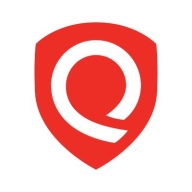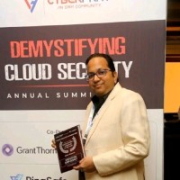

Qualys Web Application Scanning and Fortify Application Defender are two robust competitors in the web application security category. Based on data comparisons, Qualys has an edge in customer support and pricing, while Fortify provides a broader range of features that many users find justifies its higher price.
Features: Qualys Web Application Scanning excels with automated scanning capabilities, seamless integration with other security tools, and efficient vulnerability detection. Fortify Application Defender offers advanced real-time monitoring, comprehensive threat protection, and detailed attack analysis, appealing for in-depth security needs.
Room for Improvement: Qualys Web Application Scanning could improve with greater customization options, more frequent updates, and enhanced reporting features. Fortify Application Defender users mention documentation improvements, a simpler initial setup, and user-friendly interface enhancements.
Ease of Deployment and Customer Service: Qualys Web Application Scanning is known for an easy deployment process and effective user support. Despite a potentially complex setup, Fortify Application Defender provides thorough guidance and responsive customer service, aiding users through its deployment.
Pricing and ROI: Qualys Web Application Scanning is considered cost-effective, due to affordable setup costs and favorable return on investment through efficient operations. Fortify Application Defender, while presenting a higher initial cost, is seen as a valuable investment for comprehensive protection, achieving a satisfactory ROI over time.
| Product | Market Share (%) |
|---|---|
| Qualys Web Application Scanning | 2.0% |
| Fortify Application Defender | 0.8% |
| Other | 97.2% |


| Company Size | Count |
|---|---|
| Small Business | 3 |
| Midsize Enterprise | 1 |
| Large Enterprise | 8 |
| Company Size | Count |
|---|---|
| Small Business | 8 |
| Midsize Enterprise | 6 |
| Large Enterprise | 27 |
Micro Focus Security Fortify Application Defender is a runtime application self-protection (RASP) solution that helps you manage and mitigate risk from homegrown or third-party applications. It provides centralized visibility into application use and abuse while protecting from software vulnerability exploits and other violations in real time.
Qualys Web Application Scanning (WAS) is a fully cloud-based web application security scanner. The scanner will automatically crawl periodically and test web applications to discover potential vulnerabilities, including cross-site scripting (XSS) and SQL injection. The consistent testing equips the automated service to generate consistent results, lessen false positives, and offer the ability to scale to protect thousands of websites effortlessly.
Qualys Web Application Scanning is bundled with different scanning technology to carefully scan websites for malware infections and will send notifications to website owners to assist in preventing blacklisting and brand reputation damage. As digital transformation takes place in various organizations, Qualys WAS gives organizations the ability to track and document their web app security status through its interactive reporting capabilities.
Qualys WAS empowers organizations to remediate any web application vulnerabilities quickly. Some of the key tools offered are:
Benefits of Qualys Web Application Scanning
Qualys Web Application Scanning offers many benefits, including:
Reviews from Real Users
Qualys Web Application Scanning stands out among its competitors for a variety of reasons. Two of those reasons are its progressive scan and quick detection of vulnerabilities.
P.K., a senior software developer at a tech vendor, writes, "The feature that I have found most valuable is the progressive scan. It is good. It's done in 24 hours."
Nagaraj S., lead cybersecurity engineer at a tech service company, notes, "I have found the detection of vulnerabilities tool thorough with good results and the graphical display output to be wonderful and full of colors. It allows many types of outputs, such as bar and chart previews."
We monitor all Application Security Tools reviews to prevent fraudulent reviews and keep review quality high. We do not post reviews by company employees or direct competitors. We validate each review for authenticity via cross-reference with LinkedIn, and personal follow-up with the reviewer when necessary.